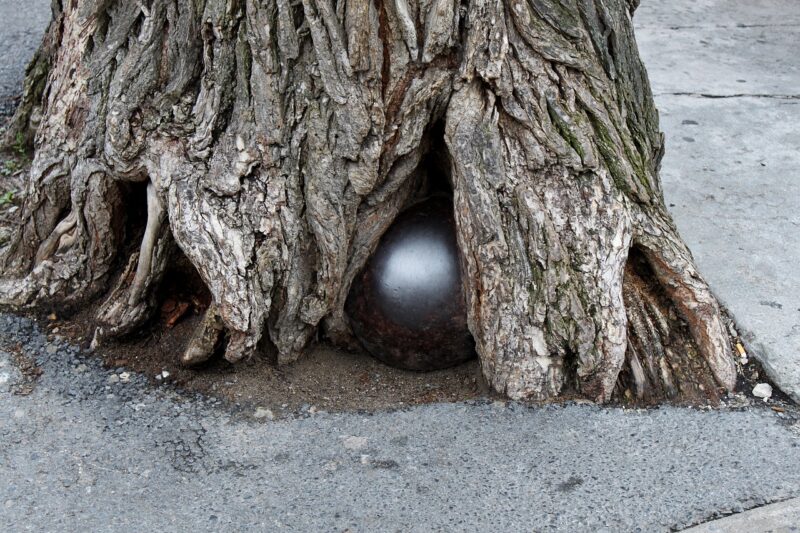When America Accidentally Sent Canada a Cannonball – and It Became a Monument
November 15, 2024

Throughout history, peculiar events have shaped the relationship between nations. One of the most bizarre yet fascinating instances is the tale of how a simple cannonball, meant for the American military, ended up in Canada and became an unexpected symbol of friendship. This tale reflects not just a humorous mix-up but also the unfolding narrative of U.S.-Canada relations, deserving of a closer look.
The Historical Context
The year was 1812, a period marked by tensions between the United States and British North America, as the former was embroiled in the War of 1812 against Britain. The war was driven by various factors, including trade restrictions, impressment of American sailors, and territorial ambitions. As a result, the Americans frequently engaged in military action along the border, particularly focusing on territories that are now part of Canada.
During this chaotic time, a series of miscommunications and logistical errors were commonplace in wartime. Troops stationed along the extensive Canadian-American border required supplies, and perhaps few could have imagined that a cannonball meant for an American encampment would journey north to become a cherished artifact in Canada.
The Unintended Delivery
In 1813, amid escalating tensions, a shipment of supplies, including military munitions, was dispatched from the United States. Within this shipment was a cannonball that, due to a clerical error, got mistakenly sent north to the village of what is now known as St. Catharines, Ontario.
Initially, this cannonball was simply an object of curiosity—a mundane, albeit heavy, piece of military hardware. It soon drew the interest of local residents, who began to regard it as a novelty. As the locals discussed how best to display the cannonball, an idea was born: why not place it in a prominent position to serve as a reminder of a storied past?
From Cannonball to Commemoration
The cannonball’s trajectory shifted from a wartime instrument of destruction to a symbol of peace and camaraderie. The townspeople in St. Catharines decided to craft a monument around this improbable artifact, erecting a large stone base and commemorating the event with a plaque that outlined the cannonball’s accidental journey from the United States.
This monument soon became a tourist attraction, drawing curiosity seekers and history buffs alike. For many, it served as a reminder that even in times of conflict, moments of accidental humor and unexpected connections can arise. The monument stands as a tangible reminder of how a misunderstanding can transition into a legacy of friendship, even between former adversaries.
The Legacy of the Cannonball Monument
Although the cannonball’s journey did not end the hostilities of the War of 1812, it imbued the relationship between the U.S. and Canada with a spirit of levity and interconnectedness. As the years passed, the monument’s significance grew, representing not only the history of the region but the shifting narratives of identity, neighborliness, and cooperation that characterize U.S.-Canada relations today.
Today, the Cannonball Monument still stands in St. Catharines as a landmark, having become part of local folklore. Visitors to the site reflect on the irony of its origin and the fascinating history that shaped it—a reminder that sometimes, unexpected occurrences can build bridges rather than walls.
Cultural Reflections and Significance
The accident that led to the creation of the Cannonball Monument speaks volumes about how history can be influenced by accidents and misunderstandings. It inspires conversations about how conflicts can lead to unexpected outcomes and how nations can transform their stories into shared experiences.
The idea of using a military artifact as a symbol of peace fosters the belief that adversaries can evolve into partners and allies. This story teaches that perspectives matter—what was once a source of tension can be reimagined as a point of connection, a lesson echoed in multiple areas of history.
The cannonball’s story is still relevant today, echoing through discussions on diplomacy, national identity, and cross-border relationships. The monument itself serves not only as a historical marker but as an ongoing invitation to visit, reflect, and appreciate the ties that bind the United States and Canada.
Lessons from the Accidental Cannonball
Adaptations happen in narratives just as they do in nature, and the case of this accidental cannonball serves as a poignant example. Kindred spirits can emerge from the fires of conflict, revealing the innate potential for humor, warmth, and solidarity, even amidst adversity.
Understanding historical events can lend perspectives that shed light on current geopolitical dynamics, showing us that history is not only about wars fought and treaties signed—it’s equally about the personal stories, the unforeseen twists, and the humanity that persists across borders.
Conclusion
In conclusion, the story of the cannonball sent from America to Canada is emblematic of the unexpectedness of history. What began as an error in logistics turned into a delightful narrative that speaks to the power of storytelling, juxtaposing conflict against the backdrop of shared humanity.
As tourists flock to see the monument, they are reminded that, while the world can often seem divisive, moments of serendipity can remind us of our shared experiences and laughter that linger, even when the paths diverge. Through every cannonball dropped, every error made, lies an opportunity for connection and understanding that can inspire future generations.
The Cannonball Monument stands as a testament to the accidents of history and the bonds forged therein, highlighting an important lesson: sometimes, the most significant legacies stem not from our actions but from unexpected moments.








